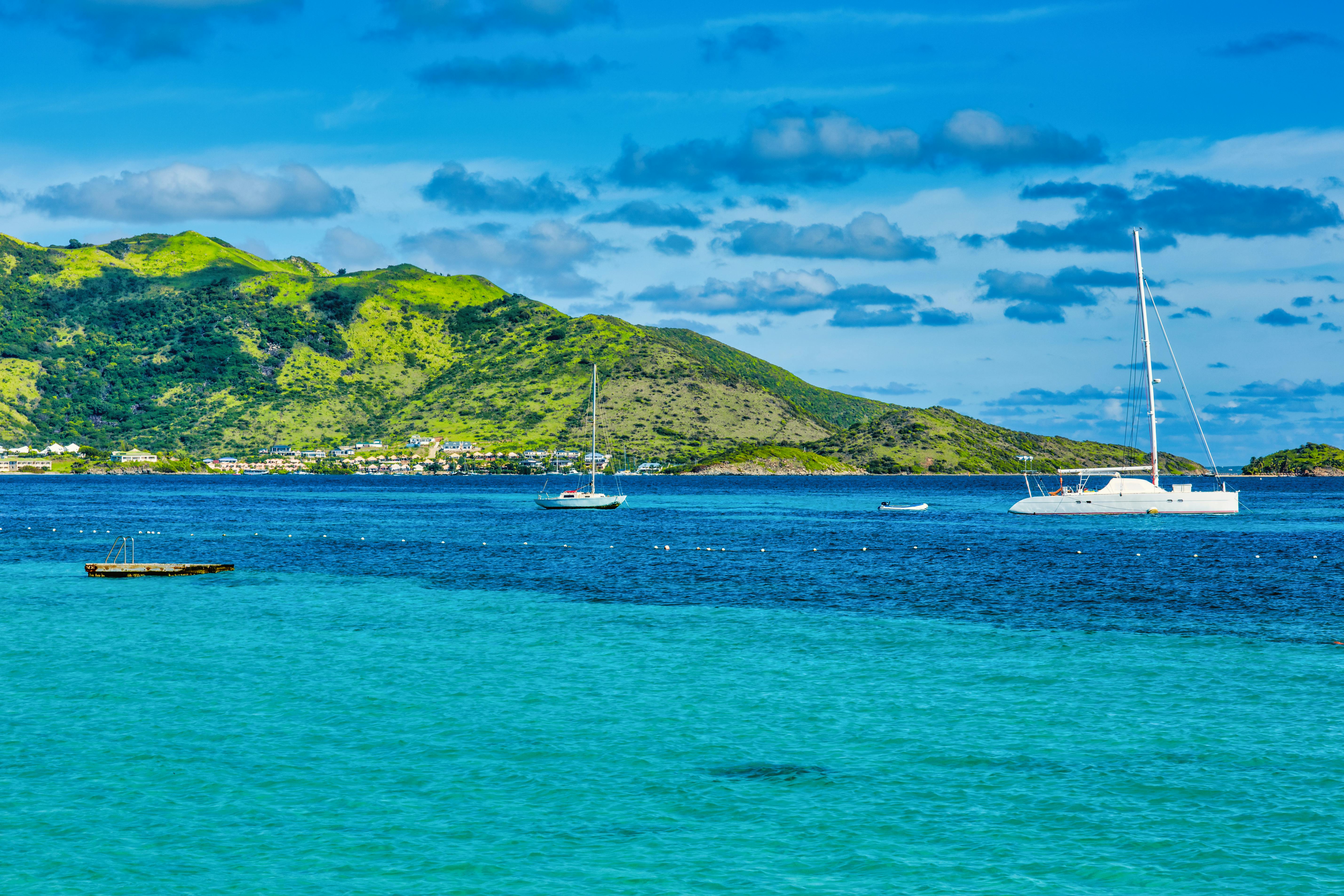Saint-Martin’s in the Caribbean: Its Cuisine Says ‘This Must Be France’
Dylan Wagner, owner of La Terrasse, a rooftop restaurant on the Caribbean island of Saint-Martin, placed his signature breakfast dish in front of me.
“This is egg cocotte, my grandmother’s recipe,” he said. “Do dip your baguette into it. It’s really tasty.” I dug in, slurping the quivering egg sprinkled with finely diced peppers, herbs and crunchy bacon while Wagner brought out the next plate – a salad topped with slices of roast duck.
My tastebuds told me I was in Paris, but the hot midmorning sun clearly said the tropics. Put the two together, and I was in heaven, especially compared with winter at home in New York.

This West Indies island, about 150 miles southeast of Puerto Rico, is awash in the turquoise waters of the Caribbean (Orient Bay is pictured above) and has two parts. Its northern part, called Saint-Martin, is an overseas collectivity of France. The southern side, known as Sint Maarten, is Dutch. Each has a capital: Marigot on the French side and Philipsburg on the Dutch. There are no official border crossings, and residents usually move freely between the two.
The mouthwatering gastronomic scene, however, sizzles on Saint-Martin, and with good reason as I discovered. For French chefs, this island is a culinary nirvana.
Why Saint-Martin is a haven for culinary enthusiasts

It’s partly because of climate, of course, but also because the island is almost equidistant from several major agricultural and seafood hubs. It takes seven hours for wine, cheese and meats to arrive from France by plane, Wagner told me.
It takes about five hours for the best beef from U.S. to arrive. It takes about the same for the best cold-water seafood from Nova Scotia to get to Saint-Martin. Mix in tropical fruit, fresh herbs, plus the island’s own local catch, and what chef wouldn’t want to cook here?
Enormous culinary opportunities
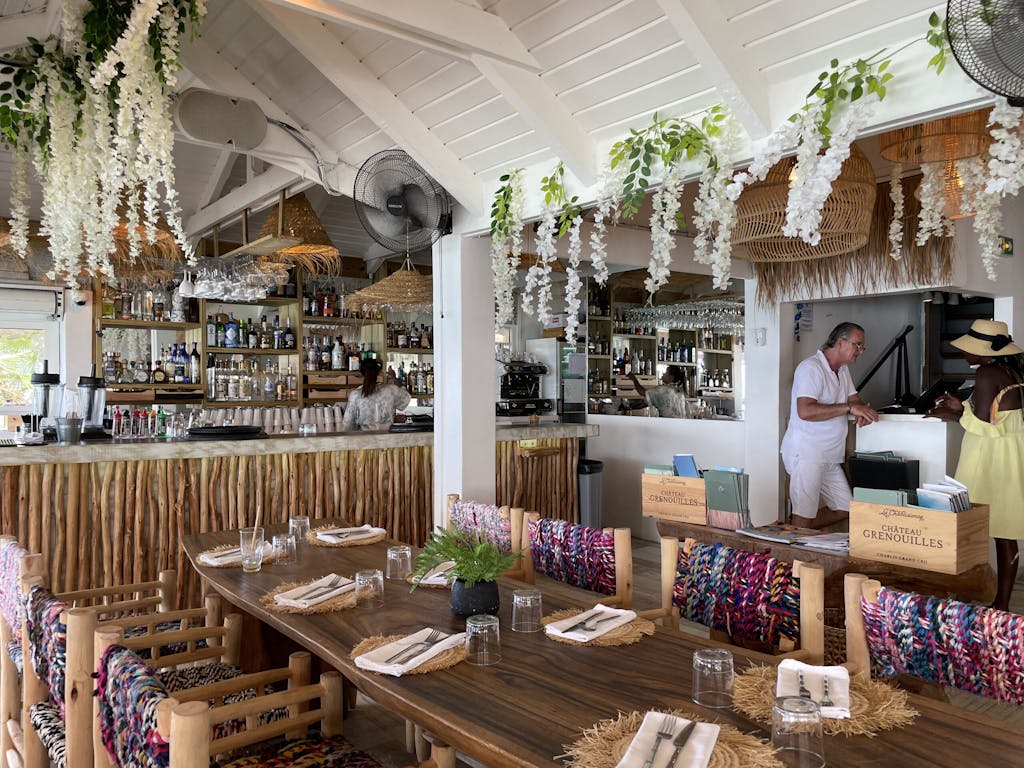
That’s how Wagner, a transplant from southeast France ended up in the Caribbean. He came here for the sun, sand and sea – and stayed because the culinary opportunities were enormous, a consistent refrain for many chefs.
He wasn’t the only one. For many chefs, it’s a consistent theme. The only thing better than the weather are the ingredients. My late afternoon snack at the Rainbow Café was a testament to that: my sushi roll came topped with the tiny morsels of foie gras.
Later, when I arrived at L’Auberge Gourmande, a quaint dinner spot with carved wooden furniture and snow-white tablecloths, I had to make hard choices between surf and turf: Do I order stuffed quail or sea scallops in saffron sauce with jumbo Cajun shrimp? The desserts didn’t make it any easier. Do I go for the crème brûlée or strawberries flambé?
Next morning I grabbed a pear tart from the Bacchus Pastry shop in the center of Marigot and then headed to a cheese-and-wine tasting at Le Comptoir des Fromages, where owner Géraud Vallet explained in detail what gave each slice and sip its unique taste. Afterwards, I leisurely browsed through lolos, the straw-covered shoreline shacks that served local bites and drinks.
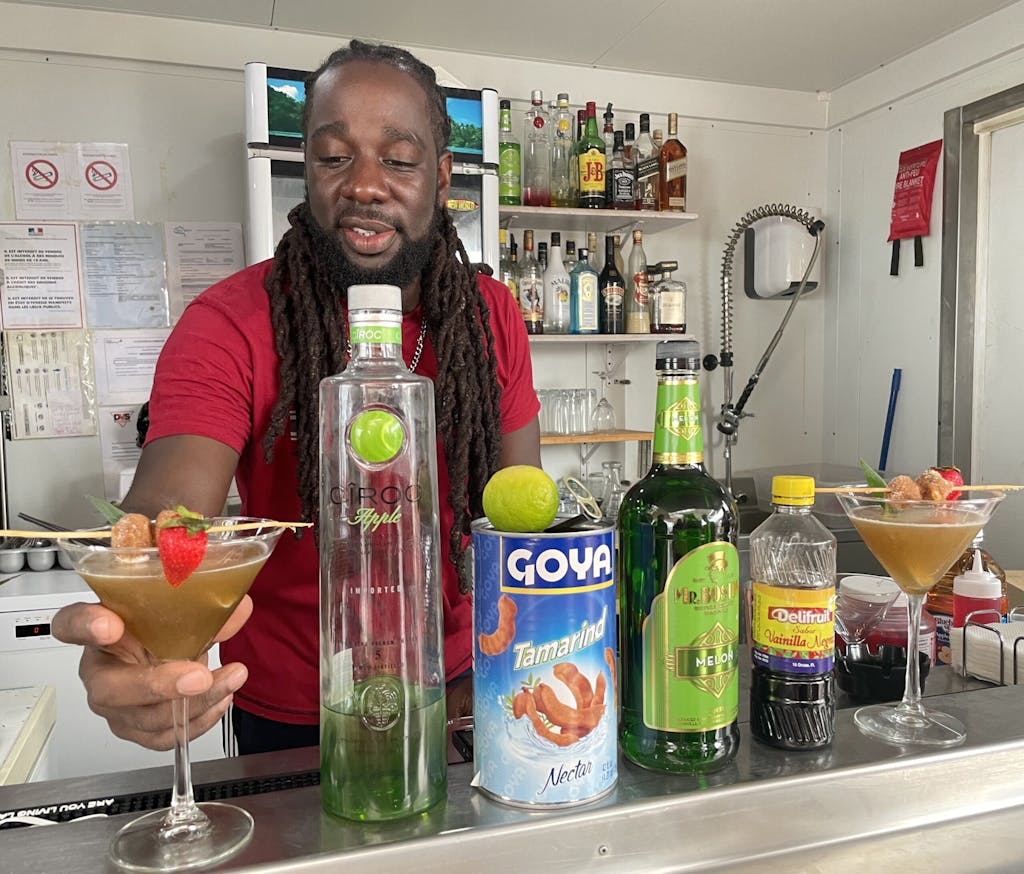
The heat was rising, so I couldn’t resist grabbing an ice-cold tamarind martini, flavored with a sweet and tangy fruit of the tropical tamarind tree. Invented by Daryl Brooks, a self-taught local mixologist, who serves it at his HotSpot SXM lolo, it was yet another testament to the ingredient cornucopia.
But my best fine dining island experience was yet to come.
Time to ditch the dress
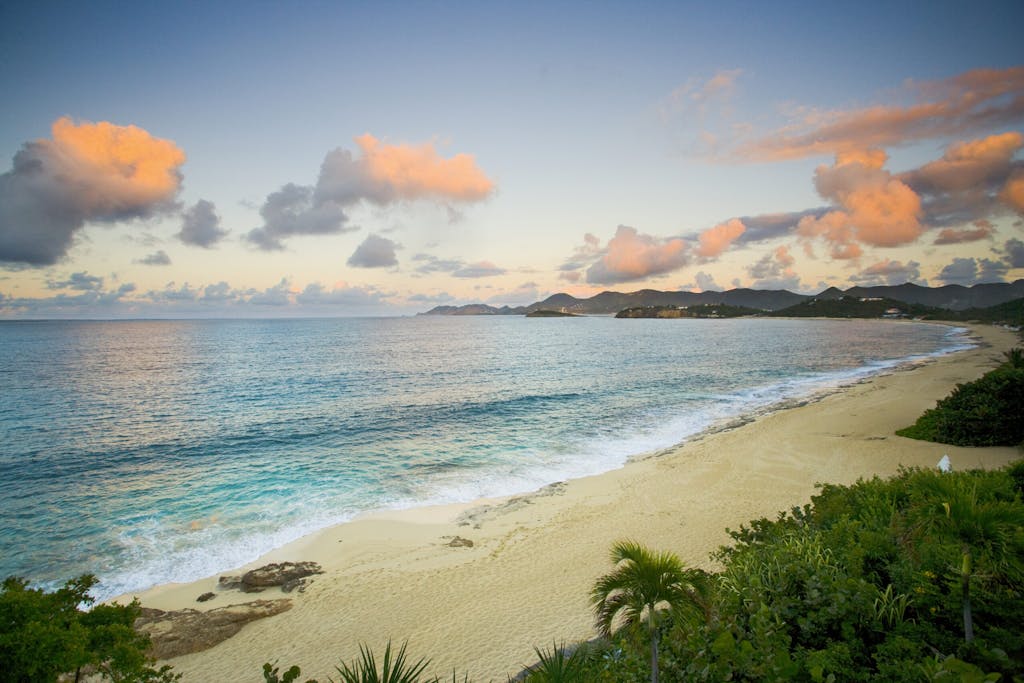
Later in the day I arrived at Coco Beach, a lunch spot with tables set among the dunes overlooking the surf. I dipped my toes in the sand, felt the sea breeze tousling my hair—and read my options. I settled on what seemed a perfect combo of Paris and palms: duck ravioli and fraîcheur éxotique, a dessert fashioned of coconut biscuits, passionfruit mousse and mango jelly.
The beach — endless and empty — was just as tempting as the food, so when my waiter came to take my order, I couldn’t help but ask. “Can I go for a walk while I wait?” “Absolutely,” she replied. “You can go not only for a walk, but for a swim, too. Shirts and shoes are optional. Your food will be here when you come back.”
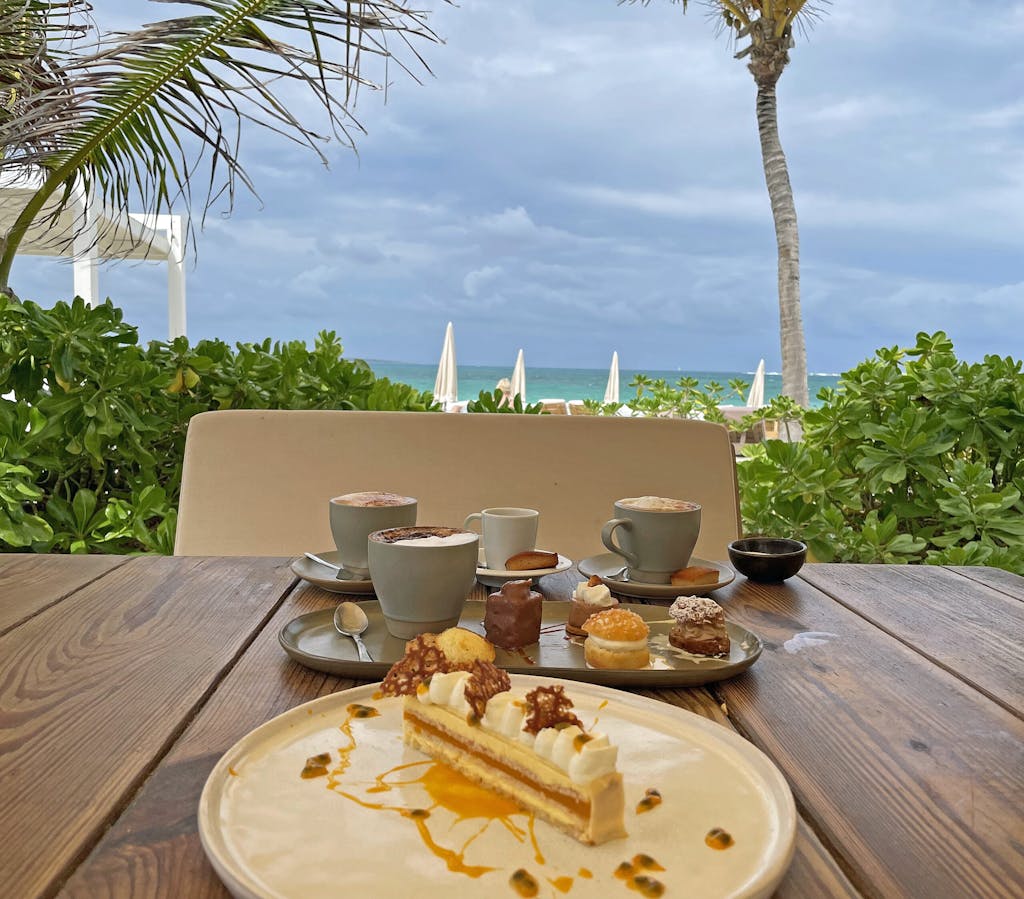
She hadn’t left my table yet, but I was already ditching my dress. (When in the tropics, always wear a swimsuit.) I hopped over the dunes, ran across the wet sand, and dove into the ocean. The waves tossed me around, rolled me over and washed me ashore, with a load of sand in my hair. I got up and jumped back in, again and again, until I spotted my waiter waving at me.
I made my way back to the table, covered in sand and seaweed, and suddenly I was super hungry. As I cut into my ravioli, soaking the pieces into the rich brown sauce, water dripped down my face and into the dish, adding some sea salt to its flavor.
Did I taste some seaweed too? Maybe. When my dessert arrived, I sensed some wonderfully crunchy morsels in it. Were they part of the recipe or part of the beach? I’d never know, but I didn’t care. Where else on earth could I savor duck ravioli and a passionfruit cake barefoot in a sand-smeared swimsuit? I can’t think of any place but Saint-Martin. For me, that was the best ingredient of all.
